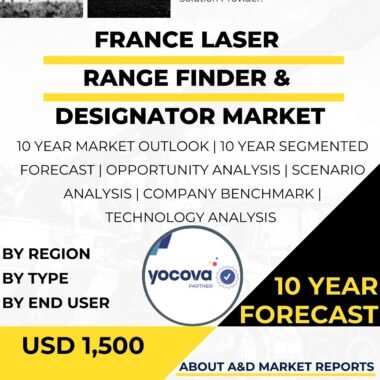Description
The 155mm artillery shell market in Japan is a specialized and critical sector within the country?s defense industry, reflective of Japan?s strategic defense posture and technological capabilities. Japan?s reliance on 155mm artillery shells is closely tied to its self-defense forces, where these shells serve as the primary munitions for its artillery systems. The market dynamics in Japan are influenced by several key factors including national defense policies, regional security concerns, technological advancements, and geopolitical alliances. Japan?s defense focus has traditionally been on maintaining a robust self-defense capability, given its pacifist constitution and reliance on advanced technology for deterrence and defense.
Japan?s self-defense forces operate a variety of artillery platforms that primarily utilize 155mm shells, known for their balance of firepower and range. These shells are manufactured with precision to meet stringent quality and safety standards, reflecting Japan?s industrial prowess and high manufacturing standards. The market is shaped by the procurement and modernization programs led by the Japan Ground Self-Defense Force, which seeks to upgrade its artillery systems to enhance range, accuracy, and lethality. This includes investments in improving conventional high-explosive rounds as well as advancements in guided and smart artillery shells that offer improved targeting precision and reduced collateral damage.
Technological innovation is a major driver within the Japanese 155mm artillery shell market. The development of extended-range projectiles, precision guidance systems, and enhanced propulsion technologies are aligned with Japan?s strategic goals to maintain a technological edge in defense capabilities. Japan?s industrial base, including major defense contractors and specialized manufacturers, focus heavily on research and development to improve the performance characteristics of artillery ammunition. This innovation also reflects a global trend towards more networked and digitally integrated artillery systems, where shells can be coordinated with advanced fire control systems and battlefield communications.
The supply chain and production ecosystem for 155mm artillery shells in Japan are closely managed to ensure security, reliability, and responsiveness. Domestic production capabilities are prioritized to reduce dependency on foreign suppliers and to safeguard sensitive technologies. Japan Steel Works, a key manufacturer, is notable for its role in designing and producing artillery barrels and ammunition components with high precision. The tightly controlled supply of raw materials, quality control in manufacturing, and thorough testing protocols are essential aspects of the market to maintain the operational readiness of Japan?s artillery forces.
Geopolitical factors significantly influence the 155mm artillery shell market in Japan. The country?s strategic environment, characterized by regional tensions and territorial disputes in surrounding waters and neighboring states, underscores the importance of a ready and capable artillery force. Japan?s alliance with the United States further impacts the market, with joint exercises and interoperability requirements shaping ammunition specifications and procurement priorities. Notably, Japan?s capabilities and stockpiles can contribute to allied support operations as part of broader security cooperation frameworks. Discussions and agreements, including those related to logistics and supply chains for artillery shells, highlight the interconnected nature of defense procurement between Japan and its allies.
The market is also shaped by Japan?s export regulations, which traditionally limit the sale of lethal military goods overseas. This stance means that domestic demand constitutes the principal market, driving continuous replenishment and modernization cycles for the Japan Ground Self-Defense Force. However, exceptions exist for certain security agreements and alliance-related supply arrangements, reflecting Japan?s evolving defense posture in response to changing security dynamics. These regulations create a market environment focused on domestic technological self-reliance and advanced manufacturing capabilities while navigating the complex balance of regional diplomacy and military readiness.
Emerging trends in the Japanese 155mm artillery shell market include an increasing emphasis on environmentally compliant materials and manufacturing processes, aligning with broader national policies on sustainability. The adoption of new propellant formulations and more efficient explosive compounds also reflects efforts to improve the operational efficiency of artillery systems while reducing logistical burdens. Concurrently, there is a growing interest in integrating smart and modular ammunition solutions that allow for versatility across different mission requirements, including illumination, smoke, and specialized munitions for counter-battery operations.
The competitive landscape within Japan for 155mm artillery shells features a mix of government-affiliated enterprises and private defense companies, each contributing to different aspects of design, production, and systems integration. Collaboration between research institutes, universities, and industry entities fosters an innovation ecosystem that supports continual improvements. While the domestic market dominates, Japan?s manufacturers also keep an eye on global trends and standards to maintain competitiveness and interoperability with allied forces.
Demand trends for 155mm artillery shells in Japan reflect a careful balance of maintaining sufficient stockpiles and advancing ammunition technology. The importance of readiness and rapid response in Japan?s defense doctrine influences procurement cycles that prioritize quality and strategic reserve levels. Investment in next-generation artillery ammunition also signals Japan?s intent to keep pace with global advancements, particularly regarding precision strike capabilities and integrated battlefield management systems. Despite pressures from budgetary constraints common to many defense sectors worldwide, Japan?s investment in artillery ammunition remains consistent, demonstrating the crucial role of this market in national security.
The overall market environment for 155mm artillery shells in Japan intertwines with broader defense modernization efforts, including upgrades to howitzer platforms and integration with digital command-and-control networks. Such modernization enhances the strategic value of the artillery units, with artillery ammunition development keeping pace through innovations in range, accuracy, and variety of effect. Japan?s cautious yet steady approach to defense procurement ensures a focus on reliability, operational effectiveness, and alignment with national security objectives, underpinning the sustained importance of the 155mm artillery shell market in the country.




